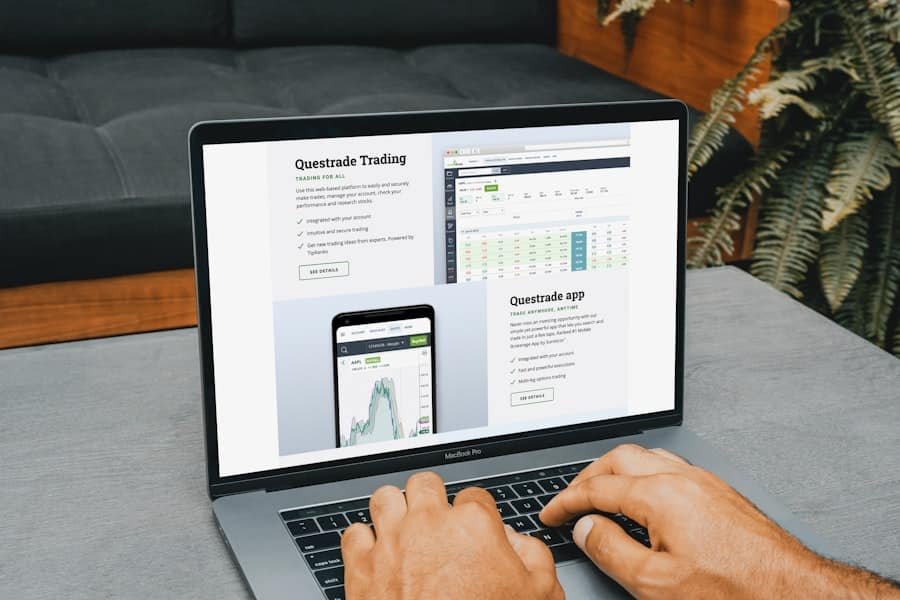In recent years, the retail landscape has undergone a significant transformation, driven largely by advancements in technology. Among these innovations, virtual try-on analytics has emerged as a pivotal tool, reshaping how consumers interact with products before making a purchase. This technology allows customers to visualise how clothing, accessories, or even cosmetics will look on them without the need for physical trials.
By leveraging augmented reality (AR) and artificial intelligence (AI), virtual try-on solutions provide a seamless and engaging shopping experience that bridges the gap between online and in-store shopping. The rise of e-commerce has necessitated the development of tools that enhance customer engagement and satisfaction. Virtual try-on analytics not only caters to the growing demand for online shopping but also addresses the common pain points associated with it, such as uncertainty about fit and style.
As consumers increasingly seek convenience and personalised experiences, retailers are turning to virtual try-on technologies to meet these expectations. This article delves into the significance of virtual try-on analytics in the retail sector, exploring its workings, benefits, challenges, and future trends.
Summary
- Virtual Try-On Analytics is revolutionizing the way customers shop for clothing and accessories online, providing a more interactive and personalized experience.
- Virtual Try-On Analytics is crucial for retailers to understand customer preferences, improve conversion rates, and reduce return rates, ultimately leading to increased sales and customer satisfaction.
- Virtual Try-On Analytics uses advanced technology such as augmented reality and machine learning to allow customers to virtually try on products and receive personalized recommendations.
- Customers benefit from Virtual Try-On Analytics by being able to make more informed purchasing decisions, saving time and effort, and experiencing a more engaging shopping experience.
- Retailers benefit from Virtual Try-On Analytics by gaining valuable insights into customer behaviour, reducing return rates, and staying ahead of the competition in the rapidly evolving retail industry.
The Importance of Virtual Try-On Analytics in the Retail Industry
Virtual try-on analytics plays a crucial role in the retail industry by enhancing customer engagement and driving sales. As consumers become more accustomed to digital interactions, the need for immersive shopping experiences has never been greater. Retailers are recognising that traditional methods of showcasing products are no longer sufficient in capturing the attention of tech-savvy shoppers.
By integrating virtual try-on capabilities into their platforms, retailers can create a more interactive and enjoyable shopping environment that encourages exploration and experimentation. Moreover, virtual try-on analytics provides valuable insights into consumer behaviour. By analysing how customers interact with virtual fitting rooms, retailers can gather data on preferences, popular styles, and even sizing trends.
This information can inform inventory management, marketing strategies, and product development, allowing retailers to tailor their offerings to meet customer demands more effectively. In an era where data-driven decision-making is paramount, the ability to harness insights from virtual try-on interactions can give retailers a competitive edge.
How Virtual Try-On Analytics Works

The mechanics of virtual try-on analytics involve a combination of advanced technologies such as computer vision, machine learning, and AR. When a customer engages with a virtual try-on feature, their image is captured through a camera—typically on a smartphone or computer. The software then uses computer vision algorithms to detect key facial features or body measurements, allowing it to accurately overlay digital representations of products onto the user’s image.
Once the product is virtually fitted onto the user’s image, machine learning algorithms come into play to enhance the realism of the experience. These algorithms can adjust the size, colour, and texture of the product based on the user’s movements and angles, creating a lifelike representation. Additionally, some platforms incorporate user feedback mechanisms that allow customers to rate their experience or suggest improvements.
This iterative process not only refines the technology but also ensures that it evolves in line with consumer expectations.
The Benefits of Virtual Try-On Analytics for Customers
For consumers, virtual try-on analytics offers a multitude of advantages that significantly enhance their shopping experience. One of the most notable benefits is the ability to visualise products in real-time without the constraints of physical fitting rooms. This convenience allows customers to experiment with different styles and combinations from the comfort of their homes, eliminating the need for time-consuming trips to stores.
Furthermore, it empowers them to make more informed purchasing decisions by providing a clearer understanding of how items will look on them. Another significant benefit is the reduction of return rates associated with online purchases. One of the primary reasons for returns in e-commerce is dissatisfaction with fit or appearance upon delivery.
By using virtual try-on technology, customers can better assess whether a product meets their expectations before committing to a purchase. This not only enhances customer satisfaction but also reduces logistical costs for retailers associated with processing returns. Ultimately, this leads to a more streamlined shopping experience that fosters loyalty and repeat business.
The Benefits of Virtual Try-On Analytics for Retailers
Retailers stand to gain immensely from implementing virtual try-on analytics within their operations. One of the most immediate benefits is an increase in conversion rates. By providing customers with an engaging way to interact with products, retailers can reduce hesitation during the purchasing process.
When customers feel confident about how an item will look on them, they are more likely to complete their transactions. This increased confidence translates into higher sales figures and improved overall profitability. Additionally, virtual try-on analytics can significantly enhance marketing efforts.
Retailers can leverage data collected from virtual try-on sessions to identify trends and preferences among their customer base. For instance, if a particular style or colour consistently receives positive feedback during virtual fittings, retailers can adjust their marketing strategies accordingly—promoting those items more heavily or ensuring they are well-stocked. This data-driven approach not only optimises inventory management but also aligns marketing campaigns with actual consumer interests.
Challenges and Limitations of Virtual Try-On Analytics

Despite its numerous advantages, virtual try-on analytics is not without its challenges and limitations. One significant hurdle is the technological barrier that some consumers may face. While many individuals are comfortable using smartphones and computers, there remains a segment of the population that may struggle with new technologies or lack access to high-quality devices capable of supporting advanced AR applications.
This digital divide can limit the reach of virtual try-on solutions and exclude potential customers from benefiting from these innovations. Moreover, there are concerns regarding accuracy and realism in virtual try-on experiences. While technology has advanced considerably, discrepancies between how a product appears virtually and how it looks in reality can still occur.
Factors such as lighting conditions, camera quality, and individual body shapes can affect the accuracy of virtual fittings. If customers perceive a lack of realism or encounter technical glitches during their experience, it may lead to frustration and diminish their trust in the retailer’s offerings.
Future Trends in Virtual Try-On Analytics
As technology continues to evolve, so too will virtual try-on analytics. One emerging trend is the integration of artificial intelligence to create even more personalised experiences for users. AI algorithms can analyse individual preferences based on past interactions and suggest products that align with a customer’s unique style or body type.
This level of personalisation not only enhances user satisfaction but also fosters brand loyalty as customers feel understood and valued by retailers. Another trend is the expansion of virtual try-on capabilities beyond clothing and accessories into other sectors such as home decor or furniture. Imagine being able to visualise how a piece of furniture would look in your living room or how a new paint colour would transform your walls—all through augmented reality applications.
This diversification could open new avenues for retailers and provide consumers with an even broader range of options when making purchasing decisions.
The Impact of Virtual Try-On Analytics on the Retail Experience
The advent of virtual try-on analytics has undeniably transformed the retail experience for both consumers and retailers alike. By merging technology with shopping, it has created an interactive environment that enhances customer engagement while providing valuable insights for businesses. As this technology continues to advance and evolve, its impact on consumer behaviour and retail strategies will likely deepen further.
In an increasingly competitive market where customer expectations are continually rising, embracing innovations like virtual try-on analytics is essential for retailers aiming to thrive. The ability to offer personalised experiences while reducing return rates positions businesses favourably in an era where convenience and satisfaction reign supreme. As we look ahead, it is clear that virtual try-on analytics will play an integral role in shaping the future of retail, making shopping more accessible, enjoyable, and tailored to individual needs than ever before.
Virtual Try-On Analytics is a crucial tool for businesses looking to enhance their online shopping experience. By analysing customer behaviour and preferences, companies can tailor their virtual try-on experiences to better meet the needs of their target audience. This data-driven approach can lead to increased customer satisfaction and ultimately boost sales. For more insights on how data analysis can benefit businesses, check out the article on why setting up an offshore company.
FAQs
What is Virtual Try-On Analytics?
Virtual Try-On Analytics is the process of using data and analytics to measure and analyze the performance of virtual try-on technology. This technology allows users to virtually try on products such as clothing, accessories, or makeup using augmented reality or computer vision.
How does Virtual Try-On Analytics work?
Virtual Try-On Analytics works by collecting and analyzing data from virtual try-on experiences. This data can include user interactions, such as the number of try-ons, conversion rates, and user feedback. By analyzing this data, businesses can gain insights into user behaviour and preferences, and use this information to improve their virtual try-on experiences.
What are the benefits of Virtual Try-On Analytics?
The benefits of Virtual Try-On Analytics include gaining insights into user behaviour and preferences, improving the virtual try-on experience, increasing conversion rates, and ultimately driving sales. By understanding how users interact with virtual try-on technology, businesses can make data-driven decisions to enhance the user experience and increase customer satisfaction.
How is Virtual Try-On Analytics used in the retail industry?
In the retail industry, Virtual Try-On Analytics is used to measure the effectiveness of virtual try-on experiences for products such as clothing, eyewear, and cosmetics. Retailers can use this data to understand customer preferences, improve product recommendations, and enhance the overall shopping experience for their customers.
What are some examples of Virtual Try-On Analytics in action?
An example of Virtual Try-On Analytics in action is a clothing retailer using data from virtual try-on experiences to identify popular styles and sizes, and then using this information to optimize their inventory and marketing strategies. Another example is a beauty brand using Virtual Try-On Analytics to understand which makeup shades are most popular among their customers, and then using this data to tailor their product offerings.
